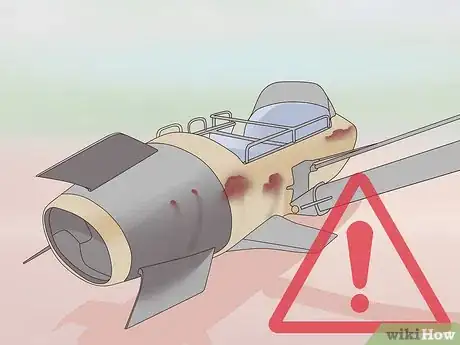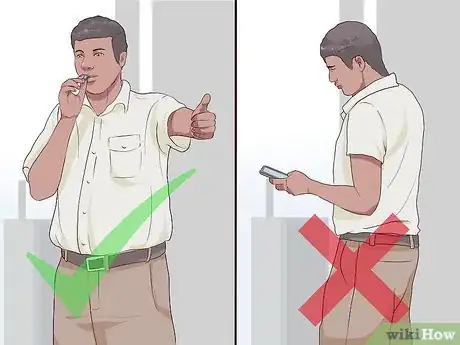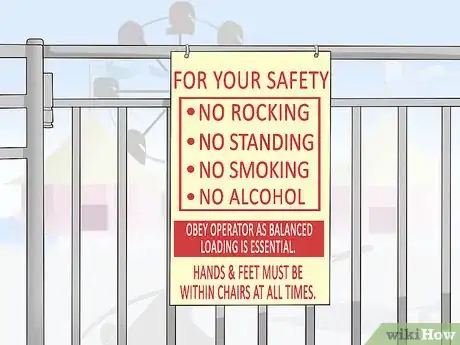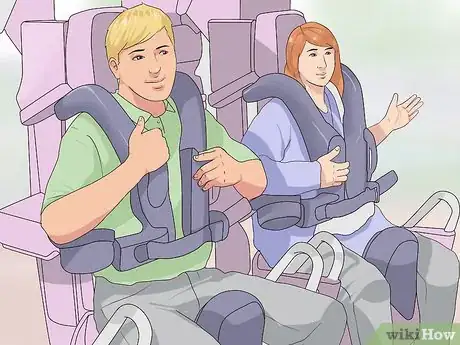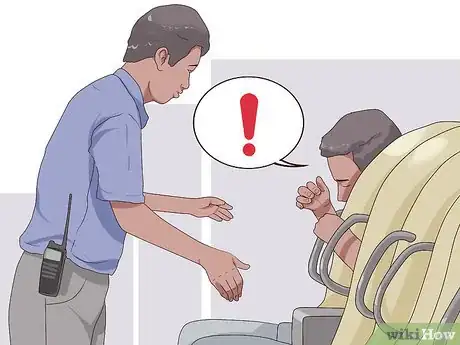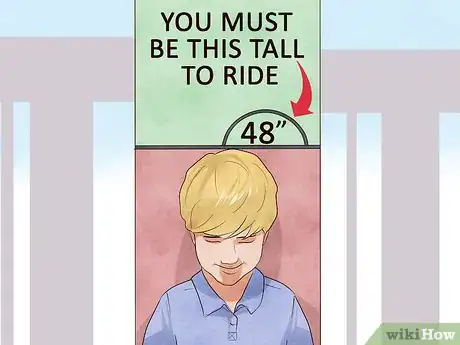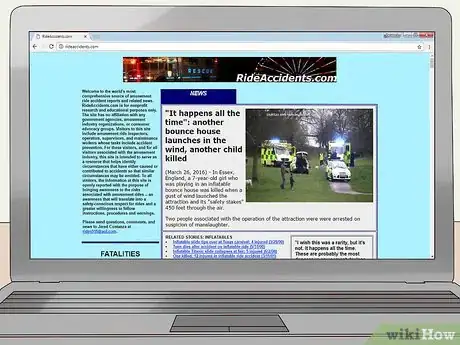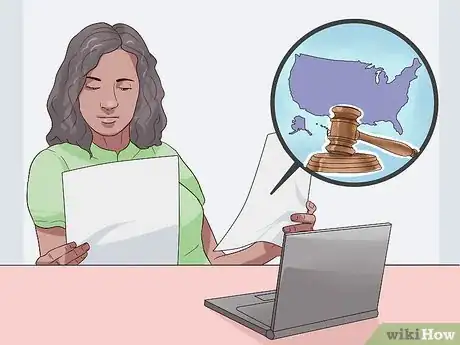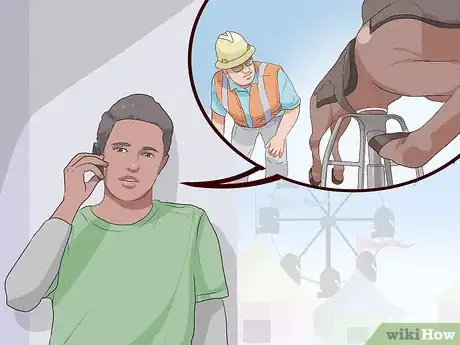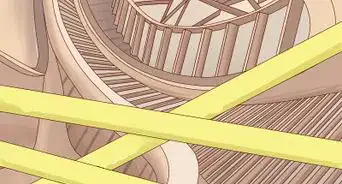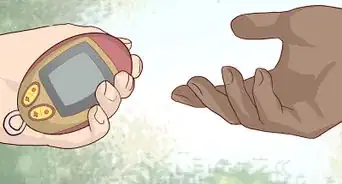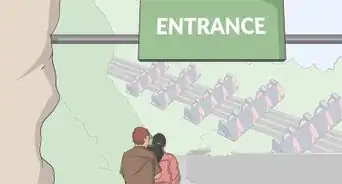This article was co-authored by wikiHow Staff. Our trained team of editors and researchers validate articles for accuracy and comprehensiveness. wikiHow's Content Management Team carefully monitors the work from our editorial staff to ensure that each article is backed by trusted research and meets our high quality standards.
There are 7 references cited in this article, which can be found at the bottom of the page.
This article has been viewed 10,248 times.
Learn more...
Most carnival rides are well-maintained and have good safety histories. However, to be on the safe side, there are steps you can take to ensure a fun and accident-free experience. When evaluating a traveling carnival ride for safety, look and listen for signs of malfunction. Look for cracks in the ride’s surfaces, rusting, quick fixes, and imperfections in the structure’s welding. Decide if the carnival staff seem professional and if the park is well maintained overall. Learn how your local laws regulate safety standards, and search online to learn more about the safety histories of the carnival company or of a particular ride.
Steps
Inspecting Rides for Safety
-
1Look for cleanliness and good maintenance throughout the park. If the carnival’s staff is skipping out on basic maintenance, they might be cutting corners when it comes to safety. Check the grounds for excessive litter and for unhealthy conditions at areas where they serve food. If you see a staff member pass by a piece of trash, they might not be concerned with ride maintenance or other safety issues.[1]
-
2Check rides for wear, surface cracks, and weld imperfections. Notice rusting and other signs of wear, especially at critical areas that seem to be load bearing or essential to the ride’s operation. Avoid rides with cracks in any surfaces or improperly welded joints. Steer clear if you notice anything that looks like a quick fix, like a patch of metal that doesn’t match the rest of the ride’s structure.[2]Advertisement
-
3Watch the rides for repeated smooth operation. Make sure the ride moves the same way every time it operates. Look for both smooth, repetitive motions in addition to a particular section where it jumps, halts, or does something that seems wrong to you.[3]
- Keep in mind the differences between how rides are built. A wooden roller coaster is built with a bit of flexibility to account for the wood framework, so it’s okay for it to sway a bit. However, a steel coaster’s structure should never sway at all.
-
4Listen for signs of poor maintenance. Typically, you shouldn’t be able to hear grinding, screeching, or other signs of improper lubrication or poor maintenance. If you hear something that concerns you, try to pay attention to what the ride is doing at the time.[4]
- Does a screech seem to indicate bad brakes as a cart comes to a stop?
- Do you hear metal-on-metal wearing that might be compromising the ride’s integrity?
- Ask a ride operator about your concerns. Ask them when the ride was last inspected. If they can’t give you any adequate explanations, ask them to direct you to park management.
-
5Notice if carnival workers are attentive. Pay attention to the ride operators, and try to evaluate their level of competency. Do they seem professional, or are they reading a magazine while the ride is in motion? If you bring any safety concerns to their attention, do they show concern or shake off your question?[5]
- Do they thoroughly check that every rider is properly restrained before starting the ride?
- If they seem uninterested in the safety aspects of their job or don’t seem knowledgeable about the ride they’re operating, you might want to skip out on that ride or stick to the carnival’s games and other amusements.
Checking for Safety Postings
-
1Check for proper safety signage. Most jurisdictions require that carnivals post safety precautions, such as “You must be this certain height to go on this ride.”[6] Look for these postings, and for the carnival’s operating permit. Depending on your jurisdiction, the carnival may also be required to post permits and inspection certificates for each ride.[7]
- You can search online to find out if your state or other locality requires individual ride permits. Search your local government’s public safety webpage using the keywords “amusement park ride operating permit.”
-
2Make sure the ride has proper safety restraints. While you’re in line, check ahead to be sure other guests have no issues with safety harnesses and belts. If you observe any complaints of loose restraints or dissatisfaction, you should skip the ride. If it comes to be your turn and everything you’ve seen so far checks out, make sure your own restraints fit snugly and lock into place.[8]
-
3Speak up if you have any concerns before the ride starts. When you harness yourself in, be sure you fit into the ride’s seat and the harness locks around you comfortably. Pay particular attention if your proportions are especially large or small. If you have any trouble at all, be sure to shout out for assistance to the operator before they start the ride.[9]
-
4Follow all posted safety instructions. Avoid rides that specify proportions that aren’t right for your body. If there are height or age restrictions, don’t sneak on or try to sneak your child. Keep your arms inside the cart or other relevant ride capsule.[10]
- Make sure to read and understand any other safety precautions that the ride’s signage outlines.
Researching Ride and Carnival Safety History
-
1Research the safety histories of a ride and a carnival company. If you want to stay informed about a carnival stopping in your area, you can always search online to find out more about its history. Enter the carnival company’s name into a search engine and combine it with search terms like “safety” or “accidents.”
- Try not to be suspicious or afraid of all amusement park rides, since the vast majority are safe, well-maintained, and issue-free. However, if you’re curious or concerned, you can find out if a particular ride or company has a history of issues. You can also check to see how those issues were resolved.
-
2Check your local jurisdiction’s laws. Local regulations vary widely, so if you want to evaluate a ride’s safety or inspection history, it’s wise to stay informed about your local laws. For example, in the United States, some states have essentially no inspection regulations whatsoever for traveling carnival rides.[11]
- The best way to check your local laws is to go to your state or other local government’s website. Look to see if they have a public safety section, or run a general search for amusement park safety regulations.
- Check your local regulations to see how often rides must be inspected, who the inspecting body is, and what kind of insurance companies are required to hold.
- If you live in a jurisdiction without any regulations, consider doing more research about a particular carnival company’s safety history. In the US, Alabama, Colorado, Mississippi, Nevada, South Dakota, and Utah have no government oversight or inspection of traveling carnival rides.[12]
-
3Look up a ride or carnival’s inspection history. In the US, many states don’t require carnival rides to be inspected by government employees, but do require some oversight. These states allow companies to be annually inspected by private third-party inspectors. If you have any concerns, you can call the carnival ahead of time and ask who they hire to conduct inspections.[13]
- You can then contact the inspecting company and request more information about the carnival’s safety history or more information about a particular ride.
References
- ↑ http://krmgroup.com/safety-notes/
- ↑ http://www.caresofficials.org/sites/default/files/cares_docs/cares-ndt-list2016-06-24-1347.pdf
- ↑ http://krmgroup.com/safety-notes/
- ↑ http://www.in.gov/dhs/files/General_Amusement_Ride_Safety_Tips.pdf
- ↑ http://www.in.gov/dhs/files/General_Amusement_Ride_Safety_Tips.pdf
- ↑ http://dfs.dps.mo.gov/about/faqs.php#amusement-ride-safety
- ↑ https://www2.illinois.gov/idol/Rides/Pages/permit.aspx
- ↑ http://krmgroup.com/safety-notes/
- ↑ http://krmgroup.com/safety-notes/
- ↑ http://www.in.gov/dhs/files/General_Amusement_Ride_Safety_Tips.pdf
- ↑ http://www.iaapa.org/safety-and-advocacy/safety/amusement-ride-safety/regulations-standards
- ↑ https://will.illinois.edu/legalissuesinthenews/program/keeping-amusement-parks-safe
- ↑ https://will.illinois.edu/legalissuesinthenews/program/keeping-amusement-parks-safe

